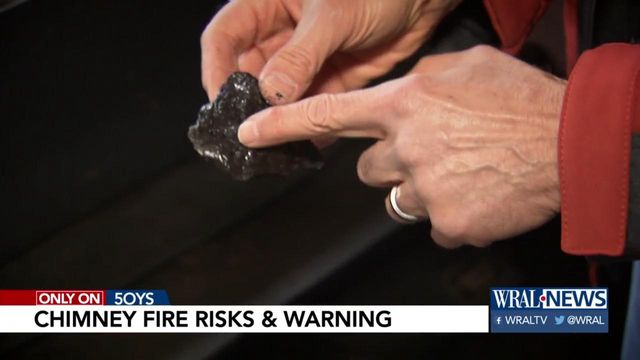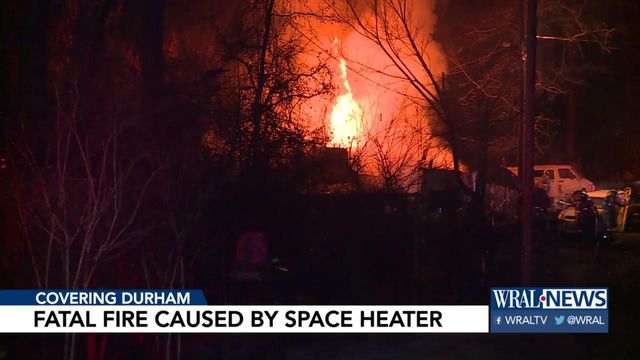What's in your chimney? Raleigh family hopes their ordeal will make you check.
When you're enjoying the crackle and warmth of your wood burning fireplace, you probably don't think about the condition of your chimney.
Posted — UpdatedWhen you’re enjoying the crackle and warmth of your wood-burning fireplace, you probably don’t think about the condition of your chimney.
John Balog hopes his story about the added excitement his family experienced Christmas morning will change that.
His neighbor texted him after seeing thick, white smoke billowing from his chimney. Balog ran outside and quickly realized the chimney was on fire!
"When I saw the amount of smoke, I said, 'This could be really bad,'" said Balog. "That’s where the danger is, especially if you’re sleeping."
The fire ignited when he added Christmas wrapping paper to his wood-burning stove.
"It started really vroom," recalled Balog, "and I tell you that it was less than a handful of tissue paper. You never do that."
Another problem, his flue.
"The whole flue was full of ash," says Balog, pointing to a photo that shows the flue opening about 4 inches wide – when it should be 10 inches.
The sides of the chimney were coated with years of ash and creosote build-up.
Creosote is an extremely flammable tar by-product of burning wood and the main culprit in the thousands of chimney fires reported nationwide, each year.
Balog removed enough chunks of the shiny, rock-like substance to fill three large trash bags.
"Luckily, it was not disastrous, " says Cary Fire Battalion Chief Andy Hiscock. His department was part of the response that day.
He also wants to help spread the word about the serious dangers of an unkempt chimney. Especially when paper is burned, it can create a large, very hot flame and burning embers.
"That raises the temperature out of your fire box more than it should be up in the actual chimney," says Hiscock. "Basically the chimney is not supposed to have fire. It just supposed to be a path for your heat and smoke to get out. If you get fire up in there, it can light that creosote that’s built up over the years."
And burning embers can also flitter out of your chimney, land on your roof or lawn and ignite.
"Basically you should just be burning hardwoods in your fireplace," says Hiscock. "If it’s a wood-burning one, even pine trees add a certain level of creosote and oil to your chimney, that is not as good as regular hardwoods."
Beyond the type of wood, its important to get your chimney checked for build-up and cleaned when needed.
Frequency depends of how many fires you burn.
Gas fire places should also be checked — for proper venting.
"Even though they don’t have a creosote buildup problem, " says Hiscock, "they have other gas and carbon monoxide issues that should be checked annually."
As bad as it looked initially, Balog is relieved for a relatively happy ending.
"We were totally blessed. No damage, no stink, no smoke in the house," says Balog.
But he does want to share one other takeaway from the ordeal.
"I called my wife, I said, 'Get the keys to the cars. Let’s get them out of the garage, and let’s grab some stuff,'" said Balog, with a bit of a laugh. "So that’s one thing we’ll have to practice because, we probably didn’t grab the right stuff. We grabbed some Christmas gifts and whatever."
Related Topics
• Credits
Copyright 2024 by Capitol Broadcasting Company. All rights reserved. This material may not be published, broadcast, rewritten or redistributed.






